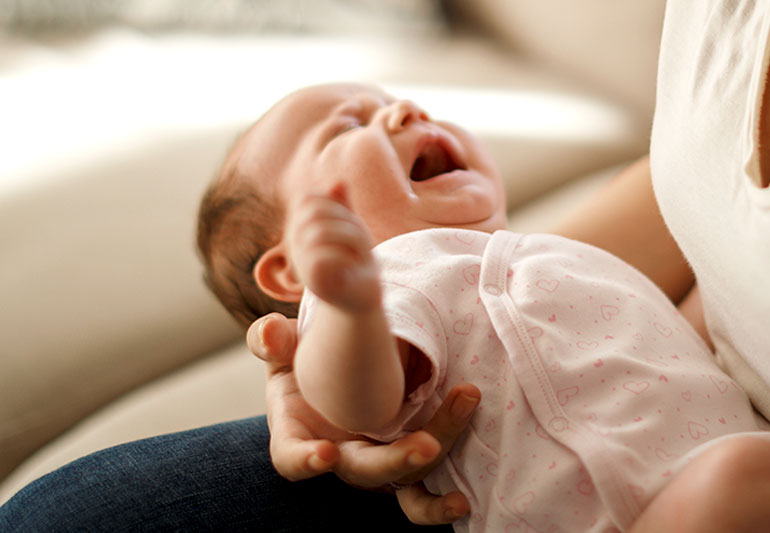
Children’s health is of the utmost importance.
We all want our children to grow up in a healthy environment, both at home and in school or early education. Every parent knows that keeping their kids healthy and safe is the most important thing they can do.
When children or babies become ill, their condition can quickly deteriorate. If you know the signs and symptoms of these common health problems in kids, you’ll be better prepared to act quickly.

Table of Contents
1. RSV (Respiratory syncytial virus)
An RSV infection is the most common cause of a child’s respiratory illness. The lungs and breathing passages are infected by RSV.
RSV symptoms include a runny nose, coughing, and a high fever, and they are similar to those of a cold. The most common ways to treat it are to rest at home and drink small amounts of fluids often.
To be on the safe side, you should take your child to the doctor if they develop any of the following symptoms: a high fever, runny nose, vomiting, or a persistent cough. You should also take your child to the doctor if they become dehydrated.
- If they show any of the following symptoms, you’ll need to call an ambulance.
- I’m having difficulty breathing.
- If you begin to turn blue
- Begin to inhale and exhale rapidly.
It’s critical to ensure that children wash their hands thoroughly and don’t share food, drink, or toys. If you want to keep the germs from spreading, teach your child to wash their hands after blowing their nose.
2. Ear infections
A child’s ear infection usually clears up on its own within a week or two without the need for medical attention. They’re known to cause ear pain and even temporary hearing loss if consumed in large quantities. It’s common for children to have bacterial or viral middle or outer ear infections.
Teething in babies can mimic the symptoms of an ear infection.
Teething can cause sore gums, a mild fever, and a rash, which are all normal symptoms. However, despite the fact that teething can cause your baby to become upset, it shouldn’t cause them to become sick.
On the other hand, an ear infection is more likely to cause a high temperature and fever, as well as coughing and irritability, as well as pulling at the ear canal.
If your child appears to be in pain, the symptoms do not improve, or pus or fluid is oozing from their ear, you should take them to the doctor.
Putting anything into your child’s ears, even if they feel obstructed, is a surefire way to increase the risk of an ear infection. Because ear drops are not prescribed by doctors or recommended by pharmacists, they should not be used by anyone but the person who prescribed them.
3. Gastroenteritis
Gastroenteritis (gastro) is an infection of the bowels that causes the stomach and intestines to become infected. Vomiting and diarrhoea are common side effects. Although diarrhoea can last up to ten days after the vomiting stops, it can last up to five days. The most common cause of gastroenteritis is a viral or bacterial infection, but it can be caused by any number of germs.
In children, gastroenteritis can cause the following symptoms:
- Nausea
- Headaches
- Vomiting in the first 24 to 48 hours
- No appetite
- Stomach pains
- Fever
Fluids are the primary treatment for most cases of gastroenteritis in children. A doctor should always be consulted if a baby is six months or younger and has gastroenteritis. Gastroenteritis, for example, is a highly contagious disease that can quickly spread among school populations.
It is critical to thoroughly wash your hands before handling food after using the bathroom or changing a child’s nappy.
4. Roseola
An infection known as Roseola Infantum typically affects babies and young children aged six months to two years. There is an increase in body temperature as a result of this medication.
If your child has Rosella, the following are possible symptoms:
- I’m suffering from a mild sore throat.
- A sudden high fever
- Swollen glands in the neck
They get a rash of pink, raised spots on their chest, tummy, and back.
In the event that your child is experiencing severe headaches or neck stiffness, as well as confusion, extreme drowsiness, or a purple rash, see a doctor immediately. Something more serious could be going on, such as meningitis.
By washing your hands frequently and practising good hygiene, you can lower your risk of developing roseola. Roseola is not preventable with a vaccine.
Roseola’s most serious complication is the risk of febrile convulsions, which can be fatal.
5. Febrile Seizures
Fever can bring on febrile seizures or convulsions. The following are signs and symptoms of febrile convulsions:
stiffness or jerkiness.
- Backwards rolling of the eyes
- loss of consciousness.
- A few minutes of twitching or jerking in the arms, legs, or face.
- loss of bladder and bowel control.
Call a doctor right away if your child has a seizure that lasts less than five minutes.

6. Conjunctivitis (pink eye).
Pediatric conjunctivitis is a common condition that affects children’s eyes. It can cause the following symptoms and is extremely contagious:
- Inflammation of the eye.
- Redness of the clear membrane covering the white part of the eye and the inner surface of the eyelids
- The eye discharges a yellow or green color.
- Crusty eyelashes
- itching or burning eyes.
A doctor should be consulted if your child’s condition does not improve in a short period of time. For viral infections, there is no need for treatment; for bacterial infections, antibiotic eye drops are required.
When a child has conjunctivitis, they should avoid touching their eyes as much as possible. They should wash their hands frequently to prevent the spread of the disease.
7. Asthma
Asthma is a common respiratory condition in Australia. The following signs and symptoms may indicate that your child has asthma:
- When they breathe, they make a wheezing sound.
- Breathlessness
- Tight chest
- Coughing is especially common at night and or in the early morning.
If you suspect your child has asthma, make an appointment with your doctor right away. A medical history will be taken and lung function tests will be ordered. Preventative measures can also be recommended, as can treatment options.
However, there are steps you and your child can take to lessen the symptoms of asthma. Pollen, house dust mites, exercise, and pets can all be potential triggers.
An important part of asthma treatment is avoiding the things that can cause an asthma attack.
8. Hand, foot, and mouth diseases
An infection with the H. pylori virus causes blisters to form on the hands, feet, and mouths of those who contract it. Foot and mouth disease, which affects animals, is not the same as this.
It is common for symptoms to last seven days, and they include:
- Fever
- Tiny blisters on the cheeks, gums, and sides of the mouth.
- Tiny blisters on the hands, feet, and nappy area.
- I’m suffering from a sore throat.
While there is no cure for this illness, you can help your child feel better by encouraging them to stay hydrated and rest as much as possible. You should also avoid squeezing the blisters, as this can lead to infection.
It is critical that your child wash their hands thoroughly on a regular basis to prevent the spread of hand, foot, and mouth diseases. If you come into contact with any of their bodily fluids, you must wash your hands immediately. Cutlery and drinking cups, in particular, should not be shared by your child.
9. Threadworm or pinworm
Pinworms, or threadworms, are a highly contagious disease that primarily affects young children. Getting infected with threadworm eggs is the most common way for children to contract it. Once in the intestines, the eggs hatch into worms.
A threadworm infestation in your child can cause the following symptoms:
- Anal itching
- Worms in their underwear
- Girls experience redness and itching around the vagina.
Threadworms can only be treated with medication. A prescription can be obtained from either your physician or pharmacist. Because the illness is so contagious, it’s critical that everyone in the household receives treatment at the same time.
Everyone in the house should change their underwear every day and not share towels. If your child is itching, you should also encourage them not to scratch and to wash their hands for at least 20 seconds with warm soapy water after using the bathroom.

Leave a Reply